

| Life & Monuments of Hamilton Holt [1872-1951] |
Hamilton Holt was an American educator, editor, author, politician, president of Rollins College, and tireless worker for world peace. Click here for his Wikipedia biography.
Right click image to enlarge.
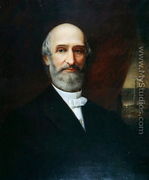
 |    1813-1896 - Henry Chandler Bowen [1813-1896], Hamilton Holt's maternal grandfather. Grew up in Woodstock, Conneticut (USA). Moved to Brooklyn, New York (USA), where he headed the lay managers of the famed Plymouth Church [of the Pilgrims]. Henry Ward Beecher [1813-1887], the pastor, was a charismatic figure who helped to redefine Protestantism, changing it from a religion based on fear of damnation to one based on on the certainty of God's love. In conformity with his principals, Beecher became deeply involved in the mid-19th Century debates over slavery and increasingly embattled in the political controversies that fueled the formation of the Republican party... Henry C. Bowen became wealthy (through the dry goods business and publishing in Brooklyn, New York) and helped found the Republican Party... He founded the anti-slavery newspaper The Independent..." 1813-1896 - Henry Chandler Bowen [1813-1896], Hamilton Holt's maternal grandfather. Grew up in Woodstock, Conneticut (USA). Moved to Brooklyn, New York (USA), where he headed the lay managers of the famed Plymouth Church [of the Pilgrims]. Henry Ward Beecher [1813-1887], the pastor, was a charismatic figure who helped to redefine Protestantism, changing it from a religion based on fear of damnation to one based on on the certainty of God's love. In conformity with his principals, Beecher became deeply involved in the mid-19th Century debates over slavery and increasingly embattled in the political controversies that fueled the formation of the Republican party... Henry C. Bowen became wealthy (through the dry goods business and publishing in Brooklyn, New York) and helped found the Republican Party... He founded the anti-slavery newspaper The Independent..." |


|
  1846 - Roseland Cottage, Woodstock, Connecticut (USA). "Also known as the Pink House or the Bowen House, was a summer home built by wealthy businessman Henry C. Bowen in 1846... Bowen invested heavily in the improvement of his home town, built a home there, where Beecher frequently visited. Bowen encouraged other lay leaders of Plymouth Church to summer with him in Woodstock. Included were Frederick Hinrichs, whose descendents still live there; the Holts (the famed publishers) and the Tappans; and Albert Lythgoe, an Egyptologist renowned for pioneering the use of scientific methods in the unearthing of antiquities... This is where Bowen hosted US Presidents for his then-famous Independence Day celebrations. Ulysses S. Grant bowled his first strike in the bowling alley located in the carriage barn... Bowen hosted July 4 celebrations at his Roseland Park during the latter part of the 19th century. These celebrations attracted as many as 10,000 people who heard speeches, saw fireworks, and drank pink lemonade. Bowen, often called 'Mr. Fourth of July,' was an important benefactor of the town [and] gave his Roseland Park, which included a man-made lake, to the community. US Presidents visited Bowen's summer home on Woodstock Hill: Ulysses S. Grant, Benjamin Harrison, and Rutherford B. Hayes, as his guests and speakers for 4 July celebrations. However, only Grant visited while he was a sitting President. Grant spent a night there in spite of the fact that Bowen (a teetotaler) forbade drinking and smoking in his home (Grant was made to smoke his cigars out on the porch, and he drank covertly). Other prominent visitors were Henry Ward Beecher and John C. Fremont." /// The pink colored house features 'tall, angular gables, gingerbread trim, and 21 formal flower gardens outlined by dwarf boxwood hedges,' according to a Hartford Courant article. Roseland is an example of Victorian Gothic Revival style, which can be seen in its pointed gables, scrolled bargeboards, many tall chimneys, and leaded glass windows in diamond shapes. The outside walls, of board and batten wood siding, have been painted 13 different colors over the past 150 years—all shades of pink (as of the summer of 2006 the house was a coral or salmon color). The house still has the owners' original furniture and knickknacks. Roseland was designed (under Bowen's direction) by architect Joseph C. Wells. The design was influenced by the architectural design books of architectural critic Andrew Jackson Downing. Fine Homebuilding magazine named Roseland one of the 25 most important houses in America in its 2006 Fine Homebuilding Houses Annual Issue."
1846 - Roseland Cottage, Woodstock, Connecticut (USA). "Also known as the Pink House or the Bowen House, was a summer home built by wealthy businessman Henry C. Bowen in 1846... Bowen invested heavily in the improvement of his home town, built a home there, where Beecher frequently visited. Bowen encouraged other lay leaders of Plymouth Church to summer with him in Woodstock. Included were Frederick Hinrichs, whose descendents still live there; the Holts (the famed publishers) and the Tappans; and Albert Lythgoe, an Egyptologist renowned for pioneering the use of scientific methods in the unearthing of antiquities... This is where Bowen hosted US Presidents for his then-famous Independence Day celebrations. Ulysses S. Grant bowled his first strike in the bowling alley located in the carriage barn... Bowen hosted July 4 celebrations at his Roseland Park during the latter part of the 19th century. These celebrations attracted as many as 10,000 people who heard speeches, saw fireworks, and drank pink lemonade. Bowen, often called 'Mr. Fourth of July,' was an important benefactor of the town [and] gave his Roseland Park, which included a man-made lake, to the community. US Presidents visited Bowen's summer home on Woodstock Hill: Ulysses S. Grant, Benjamin Harrison, and Rutherford B. Hayes, as his guests and speakers for 4 July celebrations. However, only Grant visited while he was a sitting President. Grant spent a night there in spite of the fact that Bowen (a teetotaler) forbade drinking and smoking in his home (Grant was made to smoke his cigars out on the porch, and he drank covertly). Other prominent visitors were Henry Ward Beecher and John C. Fremont." /// The pink colored house features 'tall, angular gables, gingerbread trim, and 21 formal flower gardens outlined by dwarf boxwood hedges,' according to a Hartford Courant article. Roseland is an example of Victorian Gothic Revival style, which can be seen in its pointed gables, scrolled bargeboards, many tall chimneys, and leaded glass windows in diamond shapes. The outside walls, of board and batten wood siding, have been painted 13 different colors over the past 150 years—all shades of pink (as of the summer of 2006 the house was a coral or salmon color). The house still has the owners' original furniture and knickknacks. Roseland was designed (under Bowen's direction) by architect Joseph C. Wells. The design was influenced by the architectural design books of architectural critic Andrew Jackson Downing. Fine Homebuilding magazine named Roseland one of the 25 most important houses in America in its 2006 Fine Homebuilding Houses Annual Issue." |

 |
  1860 - The Independent, New York City, New York (USA). "When businessmen Bowen bought the Independent in 1860, he named his pastor, Henry Ward Beecher [1813-1887], as editor and his fellow parishioner, Theodore Tilton [1835-1907], as editorial assistant. Prior to that purchase, Beecher had already been the author of a "Star Papers" column in the weekly newspaper. Tilton had worked on The Churchman and the New York Observer. "Beecher first knew Theodore Tilton as a clever and attractive young man who reported his sermons. Even before the latter became his editorial assistant Beecher had become fond of him and interested in his future," wrote Beecher family biographer Lyman Beecher Stowe. /// Theodore Tilton was "young, handsome, religious, intense," wrote historian William Harlan Hale. The talented Tilton edited a New York daily, called The Independent, dedicated to emancipation. Andrew A. Freeman wrote in "Mr. Lincoln Goes to New York" that Mr. Lincoln met the Independent's owner and publisher, Henry Bowen, when he came to New York to deliver his address at Cooper Union in February 1860. "While Mrs. Lincoln was the subscriber, her husband was the reader. Beecher was a regular contributor, as was his sister, Harriet Beecher Stowe, author of Uncle Tom's Cabin....Nathaniel Hawthorne and many other notable Americans contributed to the paper. Its editorial policy was one of strong opposition to slavery which it thought best represented by Seward, not Lincoln. /// Tilton's commitment to abolition ran deep. "What was at first, perhaps, only the sympathy of a sensitive boy, abhorring oppression, injustice, and wrong, soon came to be one of the deepest convictions of his nature; and it is not surprising that though his friends were desirous that he should qualify himself to enter the ministry in the Congregational church, he should have preferred the career of a journalist," wrote a contemporary." 1860 - The Independent, New York City, New York (USA). "When businessmen Bowen bought the Independent in 1860, he named his pastor, Henry Ward Beecher [1813-1887], as editor and his fellow parishioner, Theodore Tilton [1835-1907], as editorial assistant. Prior to that purchase, Beecher had already been the author of a "Star Papers" column in the weekly newspaper. Tilton had worked on The Churchman and the New York Observer. "Beecher first knew Theodore Tilton as a clever and attractive young man who reported his sermons. Even before the latter became his editorial assistant Beecher had become fond of him and interested in his future," wrote Beecher family biographer Lyman Beecher Stowe. /// Theodore Tilton was "young, handsome, religious, intense," wrote historian William Harlan Hale. The talented Tilton edited a New York daily, called The Independent, dedicated to emancipation. Andrew A. Freeman wrote in "Mr. Lincoln Goes to New York" that Mr. Lincoln met the Independent's owner and publisher, Henry Bowen, when he came to New York to deliver his address at Cooper Union in February 1860. "While Mrs. Lincoln was the subscriber, her husband was the reader. Beecher was a regular contributor, as was his sister, Harriet Beecher Stowe, author of Uncle Tom's Cabin....Nathaniel Hawthorne and many other notable Americans contributed to the paper. Its editorial policy was one of strong opposition to slavery which it thought best represented by Seward, not Lincoln. /// Tilton's commitment to abolition ran deep. "What was at first, perhaps, only the sympathy of a sensitive boy, abhorring oppression, injustice, and wrong, soon came to be one of the deepest convictions of his nature; and it is not surprising that though his friends were desirous that he should qualify himself to enter the ministry in the Congregational church, he should have preferred the career of a journalist," wrote a contemporary." |

 August 18, 1872 - Birth of Hamilton Holt, Brooklyn, New York (USA). Son of George Chandler Holt [1843-1931] and Mary Louisa Bowen. "Mary Louisa Bowen, born two years after Gothic Revival-style Roseland Cottage was completed in 1846, was the eldest daughter of Henry Chandler Bowen [1813–1896] and Lucy Maria Tappan [1825–1863]. She married George Holt in Woodstock, in 1871. Even as an adult she summered at Roseland Cottage with her family. Her daughter, Constance, was the last Bowen to live at Roseland Cottage, and did so until her death in 1968." Hamilton Holt grew up in Spuyten Duyvil section of Manhattan [sic].
August 18, 1872 - Birth of Hamilton Holt, Brooklyn, New York (USA). Son of George Chandler Holt [1843-1931] and Mary Louisa Bowen. "Mary Louisa Bowen, born two years after Gothic Revival-style Roseland Cottage was completed in 1846, was the eldest daughter of Henry Chandler Bowen [1813–1896] and Lucy Maria Tappan [1825–1863]. She married George Holt in Woodstock, in 1871. Even as an adult she summered at Roseland Cottage with her family. Her daughter, Constance, was the last Bowen to live at Roseland Cottage, and did so until her death in 1968." Hamilton Holt grew up in Spuyten Duyvil section of Manhattan [sic].
 |
  January-July 1875 - Trial of Henry Ward Beecher, New York City, New York (USA). "The newspaper owner and politician Henry Chandler Bowen emerges as the chief villain, manipulating Theodore Tilton [1835-1907], his employee, who is shown as ambitious but foolish, suspicious of his wife but not of Bowen when it mattered. Bowen needed Beecher's column in his newspaper, both for the income it provided and for the power an alliance with the pastor provided in the Republican Party. Victoria Claflin Woodhull [1838-1927] is depicted as the star of a seamy rags-to-riches story: a daughter of a small-time confidence man who married a drunk at 15, later conducted seances, and merged into New York's demi-monde, from which she rose thanks to Cornelius Vanderbilt, who befriended her and, especially, her sister Tennie [Tennessee Celeste Claflin, 1844-1923]. Woodhull even 'ran' for president - Ms. Applegate reports her candidacy but doesn't mention that she didn't meet the constitutional age requirement. Woodhull espoused suffrage for women while touting free love." January-July 1875 - Trial of Henry Ward Beecher, New York City, New York (USA). "The newspaper owner and politician Henry Chandler Bowen emerges as the chief villain, manipulating Theodore Tilton [1835-1907], his employee, who is shown as ambitious but foolish, suspicious of his wife but not of Bowen when it mattered. Bowen needed Beecher's column in his newspaper, both for the income it provided and for the power an alliance with the pastor provided in the Republican Party. Victoria Claflin Woodhull [1838-1927] is depicted as the star of a seamy rags-to-riches story: a daughter of a small-time confidence man who married a drunk at 15, later conducted seances, and merged into New York's demi-monde, from which she rose thanks to Cornelius Vanderbilt, who befriended her and, especially, her sister Tennie [Tennessee Celeste Claflin, 1844-1923]. Woodhull even 'ran' for president - Ms. Applegate reports her candidacy but doesn't mention that she didn't meet the constitutional age requirement. Woodhull espoused suffrage for women while touting free love."
|

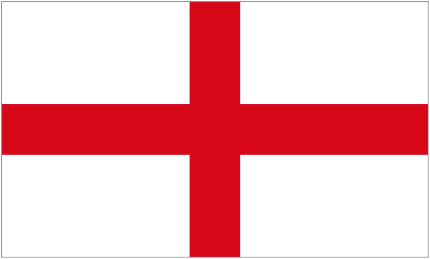 May 5, 1882 - Birth of Sylvia Pankhurst [1882-1960] in Manchester (England), a daughter of Dr. Richard Pankhurst [1834-1898] & Emmeline Pankhurst [1858-1928], members of the Independent Labour Party & (especially Emmeline) much concerned with women's rights. Sylvia & her sisters attend the Manchester High School for Girls. Her sister Christabel Pankhurst [1880-1958] will also become an activist.
Sylvia trained as an artist at the Manchester School of Art, and in 1900 won a scholarship to the Royal College of Art in South Kensington.
May 5, 1882 - Birth of Sylvia Pankhurst [1882-1960] in Manchester (England), a daughter of Dr. Richard Pankhurst [1834-1898] & Emmeline Pankhurst [1858-1928], members of the Independent Labour Party & (especially Emmeline) much concerned with women's rights. Sylvia & her sisters attend the Manchester High School for Girls. Her sister Christabel Pankhurst [1880-1958] will also become an activist.
Sylvia trained as an artist at the Manchester School of Art, and in 1900 won a scholarship to the Royal College of Art in South Kensington.
 | C
O
L
L
E
G
E |
  November 4, 1885 - Rollins College, Winter Park, Florida (USA). "Following the incorporation of Rollins in April 1885, Reverend Edward Payson Hooker [1834-1904] of the Congregationalist Church, along with Frederick Lyman of the Winter Park Land Company, took the lead in procuring funding for the school, and the face of Winter Park was forever changed. Rev. Hooker served as the first President of Rollins College, while Lyman became President of the Executive Committee. The two went about securing a top-rate faculty and the additional funds needed to open the College the following fall. A total of 66 students enrolled for the fall; unfortunately, construction of classrooms and residence cottages was not completed in time, so the official first day of classes was delayed until November 4, 1885, with the first classes held in the Congregational Church and alternate living arrangements made for the students." November 4, 1885 - Rollins College, Winter Park, Florida (USA). "Following the incorporation of Rollins in April 1885, Reverend Edward Payson Hooker [1834-1904] of the Congregationalist Church, along with Frederick Lyman of the Winter Park Land Company, took the lead in procuring funding for the school, and the face of Winter Park was forever changed. Rev. Hooker served as the first President of Rollins College, while Lyman became President of the Executive Committee. The two went about securing a top-rate faculty and the additional funds needed to open the College the following fall. A total of 66 students enrolled for the fall; unfortunately, construction of classrooms and residence cottages was not completed in time, so the official first day of classes was delayed until November 4, 1885, with the first classes held in the Congregational Church and alternate living arrangements made for the students." |

 1894 - Hamilton Holt was graduated from Yale University, New Haven, Connecticut (USA).
1894 - Hamilton Holt was graduated from Yale University, New Haven, Connecticut (USA).

 1897 - Hamilton Holt completed graduate work in economics & sociology at Columbia University, New York City, New York (USA).
1897 - Hamilton Holt completed graduate work in economics & sociology at Columbia University, New York City, New York (USA).

 |
  1897-1921 - The Independent, New York City, New York (USA). Hamilton Holt is editor & publisher of the liberal weekly magazine. "Founded in 1848 by several Congregational Church laymen, including Holt’s grandfather Henry C. Bowen, the Independent was a weekly religious magazine created to promote antebellum abolitionism. After the Civil War, the magazine remained a progressive voice that expanded it focus to address political, social, and economic issues. In 1913 Holt became editor and owner. Under his ownership, the Independent absorbed the notable progressive weekly the Chautauquan and in 1916 merged with Harper’s Weekly. Contributor as well as editor, Holt wrote articles on a variety of subjects." ("In June 1883 in the magazine The Chautauquan, the question was put, 'If a tree were to fall on an island where there were no human beings would there be any sound?' They then went on to answer the query with, 'No. Sound is the sensation excited in the ear when the air or other medium is set in motion.'") 1897-1921 - The Independent, New York City, New York (USA). Hamilton Holt is editor & publisher of the liberal weekly magazine. "Founded in 1848 by several Congregational Church laymen, including Holt’s grandfather Henry C. Bowen, the Independent was a weekly religious magazine created to promote antebellum abolitionism. After the Civil War, the magazine remained a progressive voice that expanded it focus to address political, social, and economic issues. In 1913 Holt became editor and owner. Under his ownership, the Independent absorbed the notable progressive weekly the Chautauquan and in 1916 merged with Harper’s Weekly. Contributor as well as editor, Holt wrote articles on a variety of subjects." ("In June 1883 in the magazine The Chautauquan, the question was put, 'If a tree were to fall on an island where there were no human beings would there be any sound?' They then went on to answer the query with, 'No. Sound is the sensation excited in the ear when the air or other medium is set in motion.'") |
 1899 - Hamilton Holt married Alexandria Crawford Smith. Their family grew to include four children: Beatrice (later, Beatrice Chadbourne), Leila (later Leila Rosenthal), John Eliot and George Chandler. "Not much is written about Holt’s family life. It is clear he was able to balance domestic and career responsibilities as he made rapid strides at the Independent."
1899 - Hamilton Holt married Alexandria Crawford Smith. Their family grew to include four children: Beatrice (later, Beatrice Chadbourne), Leila (later Leila Rosenthal), John Eliot and George Chandler. "Not much is written about Holt’s family life. It is clear he was able to balance domestic and career responsibilities as he made rapid strides at the Independent."

 |
  1902-1906 - An outspoken advocate for reform, prohibition, immigrant rights, and international peace, Hamilton Holt "pursued a vision of equality in the pages of the Independent, printing a series of 'lifelets' or personal stories that explored the lives ordinary Americans. The series stressed a 'bottom up' approach that addressed both the promise and challenges associated with life in the USA. The profiles published included a young Polish sweatshop woman, a Greek peddler, an Irish cook, a Swedish farmer, a German nurse, and a southern black woman. For subjects lacking formal education, Holt had their stories transcribed and read back for their approval prior to publication. More than seventy-five 'lifelets' were published in the pages of the Independent. Holt collected 16 of the short profiles in 'The Life Stories of Undistinguished Americans' (1906)." 1902-1906 - An outspoken advocate for reform, prohibition, immigrant rights, and international peace, Hamilton Holt "pursued a vision of equality in the pages of the Independent, printing a series of 'lifelets' or personal stories that explored the lives ordinary Americans. The series stressed a 'bottom up' approach that addressed both the promise and challenges associated with life in the USA. The profiles published included a young Polish sweatshop woman, a Greek peddler, an Irish cook, a Swedish farmer, a German nurse, and a southern black woman. For subjects lacking formal education, Holt had their stories transcribed and read back for their approval prior to publication. More than seventy-five 'lifelets' were published in the pages of the Independent. Holt collected 16 of the short profiles in 'The Life Stories of Undistinguished Americans' (1906)." |
 1907 - "In 1907 Hamilton Holt attended the [Second] Hague Peace Conference. Holt’s perspective on peace stressed engagement and dialogue. In 1907 he stated, 'Disarmament cannot logically precede political organization, for until the world is politically organized there is no way, except by force of arms, by which a nation can assure its rights."
1907 - "In 1907 Hamilton Holt attended the [Second] Hague Peace Conference. Holt’s perspective on peace stressed engagement and dialogue. In 1907 he stated, 'Disarmament cannot logically precede political organization, for until the world is politically organized there is no way, except by force of arms, by which a nation can assure its rights."


| C
O
N
F
E
R
E
N
C
E |  June 15-October, 1907 - Second Hague Peace Conference, Ridderzaal / Hall of Knights / Salle des Comtes, The Hague (Netherlands).
"It is a little known fact that the initiative for the Second Hague Peace Conference came from civil society in the United States. Prompted by a petition in 1903 from the American Peace Society in Boston, the Massachusetts legislature passed a resolution requesting Congress to authorize the President of the United States to invite the governments of the world to join in establishing a regular international congress to meet at stated periods to deliberate upon the various questions of common interest. The idea was taken up in St. Louis in 1904 [year of the St. Louis Worlds Fair] by the Interparliamentary Union (IPU) that recommended a conference to deal with the subjects postponed at The Hague in 1899. It led to the negotiation of a series of arbitration treaties among the various nations and the consideration of plans for a series of congresses-the kind recommended by the Massachusetts legislature.
President Theodore Roosevelt [1858-1919] responded to this invitation by convening the Second Hague Peace Conference. It was held on June 15, 1907, after being formally convened by the Czar. This time, Russia proposed an agenda limited to improvements in arbitration and humanitarian law, while America suggested discussing the limitation of armaments and the use of force in the collection of debts." /// The Ridderzaal is the main building of the Dutch Parliament (Het Binnenhof) & is used for official royal receptions, interparliamentary conferences, etc. On the third Tuesday in September (Prinsjesdag) the Dutch monarch drives to the Ridderzaal in the Golden Carriage & opens Parliament by delivering a speech from the throne. June 15-October, 1907 - Second Hague Peace Conference, Ridderzaal / Hall of Knights / Salle des Comtes, The Hague (Netherlands).
"It is a little known fact that the initiative for the Second Hague Peace Conference came from civil society in the United States. Prompted by a petition in 1903 from the American Peace Society in Boston, the Massachusetts legislature passed a resolution requesting Congress to authorize the President of the United States to invite the governments of the world to join in establishing a regular international congress to meet at stated periods to deliberate upon the various questions of common interest. The idea was taken up in St. Louis in 1904 [year of the St. Louis Worlds Fair] by the Interparliamentary Union (IPU) that recommended a conference to deal with the subjects postponed at The Hague in 1899. It led to the negotiation of a series of arbitration treaties among the various nations and the consideration of plans for a series of congresses-the kind recommended by the Massachusetts legislature.
President Theodore Roosevelt [1858-1919] responded to this invitation by convening the Second Hague Peace Conference. It was held on June 15, 1907, after being formally convened by the Czar. This time, Russia proposed an agenda limited to improvements in arbitration and humanitarian law, while America suggested discussing the limitation of armaments and the use of force in the collection of debts." /// The Ridderzaal is the main building of the Dutch Parliament (Het Binnenhof) & is used for official royal receptions, interparliamentary conferences, etc. On the third Tuesday in September (Prinsjesdag) the Dutch monarch drives to the Ridderzaal in the Golden Carriage & opens Parliament by delivering a speech from the throne.
|
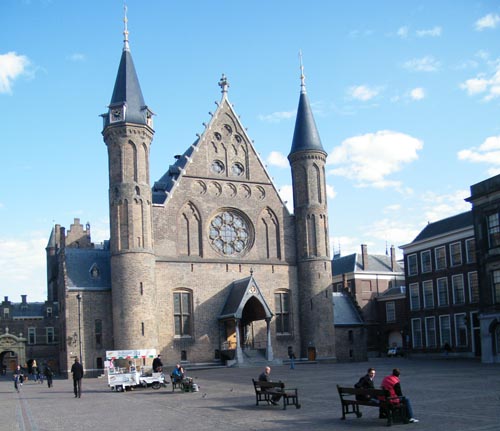
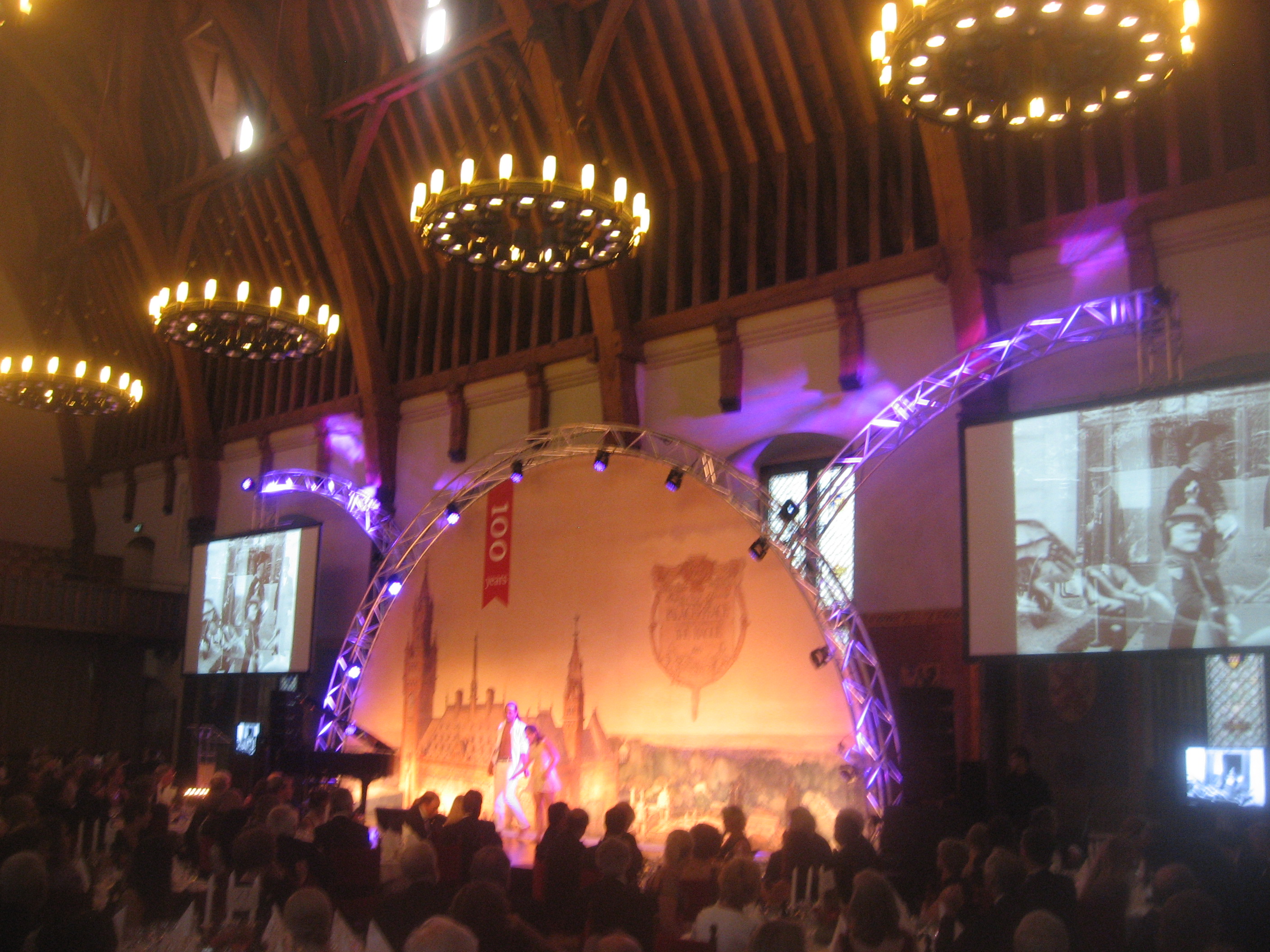
 |  June 15, 1907 - Ridderzaal / Salle des Comtes / Hall of Knights, The Hague (Netherlands). Unintentional monument. Ancient building restored 1898-1904 to serve its present purposes. Venue of the Second Hague Peace Conference, June-October 1907, & of the Peace Palace Philanthropy Gala on 2 September 2013.
Right image by EWL shows the stage erected for the gala on 2 September 2013 (opposite the throne). June 15, 1907 - Ridderzaal / Salle des Comtes / Hall of Knights, The Hague (Netherlands). Unintentional monument. Ancient building restored 1898-1904 to serve its present purposes. Venue of the Second Hague Peace Conference, June-October 1907, & of the Peace Palace Philanthropy Gala on 2 September 2013.
Right image by EWL shows the stage erected for the gala on 2 September 2013 (opposite the throne).
|
Note: "An inflexible alliance system emerged by 1907, which pitted the Entente Powers (Britain, France, and Russia) against the Triple Alliance (Germany, Austria-Hungary, and Italy). The Great Powers no longer enjoyed the opportunity to shift alliances to maintain a balance of power."
 1909 - Continuing his advocacy for diversity and acceptance, Hamilton Holt along with other notable progressives such as W.E.B. Dubois, Ida B. Wells-Barnett, Jane Addams, Florence Kelley, John Dewey, Charles Darrow, and Mary McLeod Bethune founded the National Association for the Advancement of Colored People (NAACP) in 1909." "On May 30, 1909, the Niagara Movement conference took place at New York City's Henry Street Settlement House, from which an organization of more than 40 individuals emerged, calling itself the National Negro Committee. W.E.B. Du Bois played a key role in organizing the event and presided over the proceedings. Also in attendance was African-American journalist and anti-lynching crusader Ida B. Wells-Barnett. At its second conference on May 30, 1910, members chose as the organization's name the National Association for the Advancement of Colored People and elected its first officers... The conference resulted in a more influential and diverse organization, where the leadership was predominantly white and heavily Jewish American. In fact, at its founding, the NAACP had only one African American on its executive board, Du Bois himself. It did not elect a black president until 1975, although executive directors had been African American."
1909 - Continuing his advocacy for diversity and acceptance, Hamilton Holt along with other notable progressives such as W.E.B. Dubois, Ida B. Wells-Barnett, Jane Addams, Florence Kelley, John Dewey, Charles Darrow, and Mary McLeod Bethune founded the National Association for the Advancement of Colored People (NAACP) in 1909." "On May 30, 1909, the Niagara Movement conference took place at New York City's Henry Street Settlement House, from which an organization of more than 40 individuals emerged, calling itself the National Negro Committee. W.E.B. Du Bois played a key role in organizing the event and presided over the proceedings. Also in attendance was African-American journalist and anti-lynching crusader Ida B. Wells-Barnett. At its second conference on May 30, 1910, members chose as the organization's name the National Association for the Advancement of Colored People and elected its first officers... The conference resulted in a more influential and diverse organization, where the leadership was predominantly white and heavily Jewish American. In fact, at its founding, the NAACP had only one African American on its executive board, Du Bois himself. It did not elect a black president until 1975, although executive directors had been African American."
 1909 - Hamilton Holt wrote "Commercialism and Journalism."
1909 - Hamilton Holt wrote "Commercialism and Journalism."
 1911 - "Hamilton Holt further clarified the need for a centralized body to promote peace in 1911, when he wrote in an issue of World’s Work, 'Let us add to the Declaration of Independence, a Declaration of Interdependence…Let the United Nation succeed the United States.'"
1911 - "Hamilton Holt further clarified the need for a centralized body to promote peace in 1911, when he wrote in an issue of World’s Work, 'Let us add to the Declaration of Independence, a Declaration of Interdependence…Let the United Nation succeed the United States.'"

|   February 1914 - Church Peace Union (CPU), Merrill House
170 East 64th Street, New York City, New York (USA). "The CCEIA was founded in New York City in 1914, when Andrew Carnegie [1835-1919] assembled a group of leaders in religion, academia and politics and appointed them trustees of an organization named the Church Peace Union (CPU). Through the CPU, Carnegie hoped to mobilize the world's churches, religious organizations and other spiritual and moral resources to join in promoting moral leadership and finding alternatives to armed conflict. Rev. William Pierson Merrill [1867-1954], pastor of New York's Brick [Presbyterian] Church, became the first president of the CPU... In 1961, the CPU was renamed Council on Religion & International Affairs (CRIA)... The first resolution of the Church Peace Union was signed on February 10, 1914 by Hamilton Holt among others... In 2005, the Council changed its name to Carnegie Council for Ethics in International Affairs (CCEIA)." February 1914 - Church Peace Union (CPU), Merrill House
170 East 64th Street, New York City, New York (USA). "The CCEIA was founded in New York City in 1914, when Andrew Carnegie [1835-1919] assembled a group of leaders in religion, academia and politics and appointed them trustees of an organization named the Church Peace Union (CPU). Through the CPU, Carnegie hoped to mobilize the world's churches, religious organizations and other spiritual and moral resources to join in promoting moral leadership and finding alternatives to armed conflict. Rev. William Pierson Merrill [1867-1954], pastor of New York's Brick [Presbyterian] Church, became the first president of the CPU... In 1961, the CPU was renamed Council on Religion & International Affairs (CRIA)... The first resolution of the Church Peace Union was signed on February 10, 1914 by Hamilton Holt among others... In 2005, the Council changed its name to Carnegie Council for Ethics in International Affairs (CCEIA)."
|

|  August 1, 1914 - First conference of the Church Peace Union (CPU), Insel Mainau / Mainau Island, Meersburg, Lake Constance (Germany). CPU was founded by Andrew Carnegie [1835-1919] in New York City in February 1914.
"The timing of the CPU's founding was significant. On the very eve of World War I, Carnegie sought to make war obsolete for all time. For its inaugural international event, the CPU sponsored a conference to be held on the shores of Lake Constance in southern Germany. As the delegates made their way to the conference by train, Germany was invading Belgium." "Delegates met on 1st August, the day the Kaiser ordered mobilisation. They were allowed to leave the country on the last train to France, and then boarded a steamer for London." [PvdD 16Jul10] August 1, 1914 - First conference of the Church Peace Union (CPU), Insel Mainau / Mainau Island, Meersburg, Lake Constance (Germany). CPU was founded by Andrew Carnegie [1835-1919] in New York City in February 1914.
"The timing of the CPU's founding was significant. On the very eve of World War I, Carnegie sought to make war obsolete for all time. For its inaugural international event, the CPU sponsored a conference to be held on the shores of Lake Constance in southern Germany. As the delegates made their way to the conference by train, Germany was invading Belgium." "Delegates met on 1st August, the day the Kaiser ordered mobilisation. They were allowed to leave the country on the last train to France, and then boarded a steamer for London." [PvdD 16Jul10] 
|

 |
  June 17, 1915 - "Win the War for Permanent Peace" Convention, League to Enforce Peace, Independence Hall, Philadelphia, Pensylvania (USA). The League to Enforce Peace (LEP) "was formed in 1914 in New York City by American citizens concerned by the outbreak of World War I [and] formally announced by 100 noteworthy Americans at the convention on June 17, 1915... They proposed an international agreement in which nations would agree to 'jointly use their economic and military force against any one of their number that goes to war or commits acts of hostility against another.' Former US President William Howard Taft [1857-1930] was LEP's first president. Elected to the Executive Committee were Harvard President Abbott Lawrence Lowell [1856-1943], Oscar S. Straus, magazine editor Hamilton Holt [1872-1951], Taft, and a dozen others. Founders included Alexander Graham Bell, Rabbi Stephen S. Wise, James Cardinal Gibbons, and Edward Filene on behalf of the recently founded US Chamber of Commerce... In February 1919, the League held a series of public meetings in more than half a dozen American cities in support of Wilson's League of Nations proposal... Support for the LEP dissolved [over time], and it ceased operations by 1923." June 17, 1915 - "Win the War for Permanent Peace" Convention, League to Enforce Peace, Independence Hall, Philadelphia, Pensylvania (USA). The League to Enforce Peace (LEP) "was formed in 1914 in New York City by American citizens concerned by the outbreak of World War I [and] formally announced by 100 noteworthy Americans at the convention on June 17, 1915... They proposed an international agreement in which nations would agree to 'jointly use their economic and military force against any one of their number that goes to war or commits acts of hostility against another.' Former US President William Howard Taft [1857-1930] was LEP's first president. Elected to the Executive Committee were Harvard President Abbott Lawrence Lowell [1856-1943], Oscar S. Straus, magazine editor Hamilton Holt [1872-1951], Taft, and a dozen others. Founders included Alexander Graham Bell, Rabbi Stephen S. Wise, James Cardinal Gibbons, and Edward Filene on behalf of the recently founded US Chamber of Commerce... In February 1919, the League held a series of public meetings in more than half a dozen American cities in support of Wilson's League of Nations proposal... Support for the LEP dissolved [over time], and it ceased operations by 1923."
|

|  WW-I - Holt (far right) visiting Belgian trenches during World War I. WW-I - Holt (far right) visiting Belgian trenches during World War I.
|

|  December 13, 1918 - Paris (France). Resolution of the Church Peace Union cabled to President Woodrow Wilson in Paris over the signatures of the following CPU trustees: Peter Ainslie, Henry A. Atkinson, Arthur J. Brown, Francis E. Clark, W.H.P. Faunce, James Cardinal Gibbons, Frank Oliver Hall, Hamilton Holt, William I. Hull, Charles E. Jefferson, Frederick Lynch, Charles S. MacParland, Marcus M. Marks, Dean Shailer Mathews, Edwin D. Mead, William Pierson Merrill, John R. Mott, George A. Plimpton, Junius B. Remensynder, Henry Wade Rogers, Robert E. Speer, James J. Walsh, Luther B. Wilson, and Robert H. Gardiner. December 13, 1918 - Paris (France). Resolution of the Church Peace Union cabled to President Woodrow Wilson in Paris over the signatures of the following CPU trustees: Peter Ainslie, Henry A. Atkinson, Arthur J. Brown, Francis E. Clark, W.H.P. Faunce, James Cardinal Gibbons, Frank Oliver Hall, Hamilton Holt, William I. Hull, Charles E. Jefferson, Frederick Lynch, Charles S. MacParland, Marcus M. Marks, Dean Shailer Mathews, Edwin D. Mead, William Pierson Merrill, John R. Mott, George A. Plimpton, Junius B. Remensynder, Henry Wade Rogers, Robert E. Speer, James J. Walsh, Luther B. Wilson, and Robert H. Gardiner.
|
 1919 - "Holt's engagement on the international stage was varied, he was founding member of the Italy-America Society, the Netherlands American Foundation, American-Scandinavian Foundation, the Greek-American Club and the Friends of Poland. In the aftermath of the First World War, he became a strong supporter of Woodrow Wilson’s League of Nation proposal. He attended the 1919 Paris Peace Conference..."
1919 - "Holt's engagement on the international stage was varied, he was founding member of the Italy-America Society, the Netherlands American Foundation, American-Scandinavian Foundation, the Greek-American Club and the Friends of Poland. In the aftermath of the First World War, he became a strong supporter of Woodrow Wilson’s League of Nation proposal. He attended the 1919 Paris Peace Conference..." 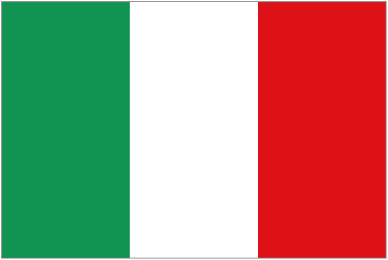

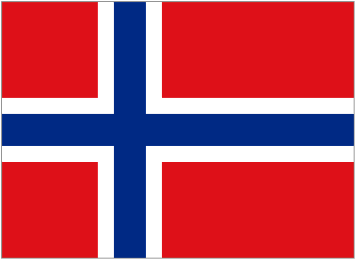
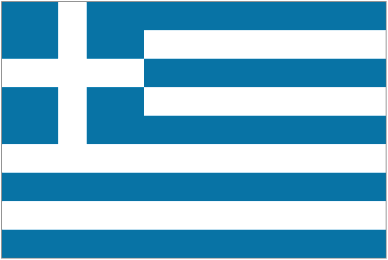

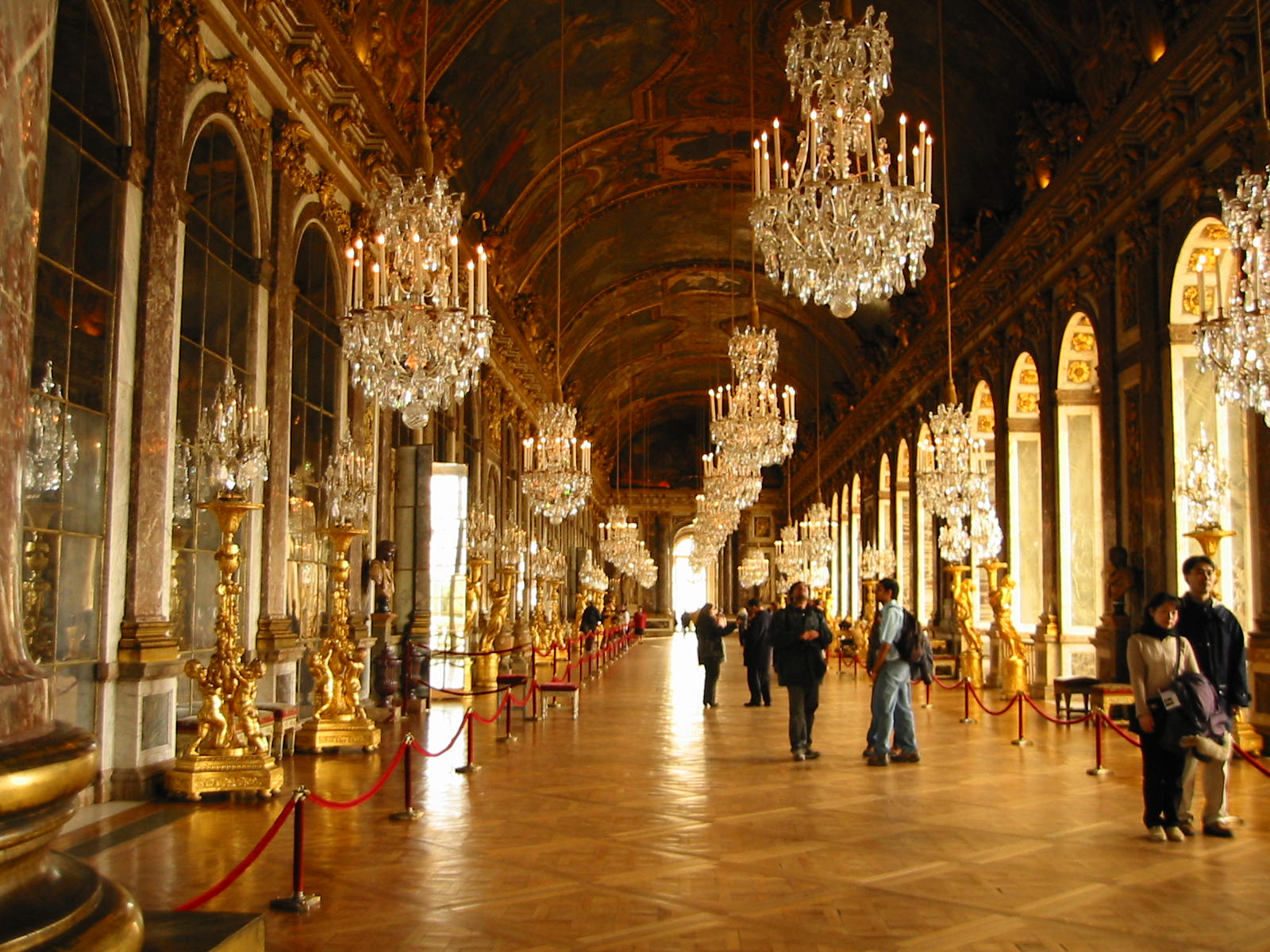

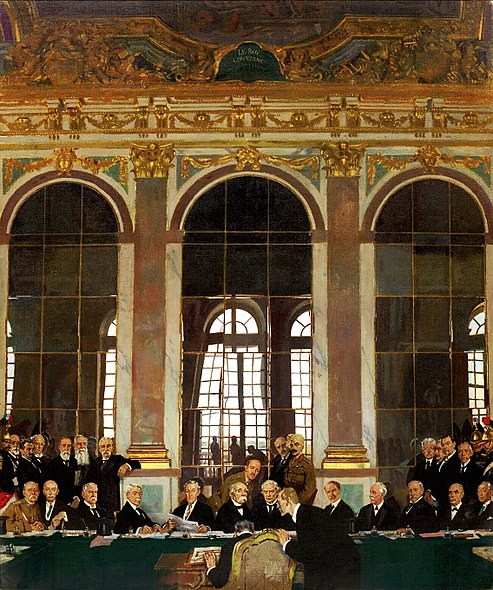
| H
A
L
L |  June 28, 1919 - Galerie des Glaces / Hall of Mirrors, Palace of Versailles, Versailles (France). This room was constructed by King Louis XIV in 1678-1684. It became a an "unintentional monument" with the signing of the Treaty of Versailles with Germany ending the World War I (1914–1918) and founding the League of Nations.
Click here for post cards. June 28, 1919 - Galerie des Glaces / Hall of Mirrors, Palace of Versailles, Versailles (France). This room was constructed by King Louis XIV in 1678-1684. It became a an "unintentional monument" with the signing of the Treaty of Versailles with Germany ending the World War I (1914–1918) and founding the League of Nations.
Click here for post cards.
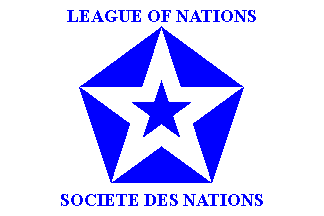
| P
A
I
N
T
I
N
G |
  1919 - "Signing of Peace in the Hall of Mirrors,"
Imperial War Museum, London (England).
By Irish artist Sir William Orpen [1878- 1931]. Norman Stone (2009) says this "captured the political wrangling and vainglory of the gathered politicians and statesman whom Orpen came to loathe but increasingly relied upon for his post-war portrait commissions.
The peace-makers look extraordinarily pleased with them- selves as they pose for rather wooden immortaliation: silkiness of mous- tache, acuteness of gaze, dignity of stance. A Maharajah and a Japanese baron look on, evidence of the peace-makers' internationalism and benevolence. Clemenceau is said to have remarked that he was sitting between a would-be Napoleon (Lloyd George) and a would-be Jesus Christ (Wilson). 1919 - "Signing of Peace in the Hall of Mirrors,"
Imperial War Museum, London (England).
By Irish artist Sir William Orpen [1878- 1931]. Norman Stone (2009) says this "captured the political wrangling and vainglory of the gathered politicians and statesman whom Orpen came to loathe but increasingly relied upon for his post-war portrait commissions.
The peace-makers look extraordinarily pleased with them- selves as they pose for rather wooden immortaliation: silkiness of mous- tache, acuteness of gaze, dignity of stance. A Maharajah and a Japanese baron look on, evidence of the peace-makers' internationalism and benevolence. Clemenceau is said to have remarked that he was sitting between a would-be Napoleon (Lloyd George) and a would-be Jesus Christ (Wilson).
|
 After 1919 - Holt toured the United States promoting US participation in the League of Nations. One article in the Independent warned, 'If the covenant…is defeated, the nations cannot go forward on an orderly basis of international cooperation, but must sink back to the old era of nationalistic competition, with its mutual hates, suspicions, and intrigues, its colossal armaments and inevitable wars.' Holt helped found the League of Nations Non-Partisan Association and would later serve as director of the Woodrow Wilson Foundation."
After 1919 - Holt toured the United States promoting US participation in the League of Nations. One article in the Independent warned, 'If the covenant…is defeated, the nations cannot go forward on an orderly basis of international cooperation, but must sink back to the old era of nationalistic competition, with its mutual hates, suspicions, and intrigues, its colossal armaments and inevitable wars.' Holt helped found the League of Nations Non-Partisan Association and would later serve as director of the Woodrow Wilson Foundation." 
 1921 - "In 1921, Holt stepped down as editor of the Independent, becoming a consultant. He maintained his peace activism as he lectured for the American branch of the International Conciliation & World Peace Foundation and was one of the honorary directors of World Federalist[s] USA. Holt’s efforts to promote peace garnered accolades and commendations from governments around the world. He was member of the Japanese Order of the Sacred Treasure, an officer of the Greek Order of George I, a member of the French Order of Public Instruction, a knight in the French Legion of Honor, a member of the Order of the Crown of Italy, a knight in Polonia Restituta, and a knight of the Swedish North Star."
1921 - "In 1921, Holt stepped down as editor of the Independent, becoming a consultant. He maintained his peace activism as he lectured for the American branch of the International Conciliation & World Peace Foundation and was one of the honorary directors of World Federalist[s] USA. Holt’s efforts to promote peace garnered accolades and commendations from governments around the world. He was member of the Japanese Order of the Sacred Treasure, an officer of the Greek Order of George I, a member of the French Order of Public Instruction, a knight in the French Legion of Honor, a member of the Order of the Crown of Italy, a knight in Polonia Restituta, and a knight of the Swedish North Star."






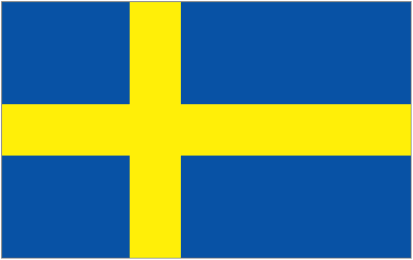

 May 10, 1924 - Birth of Mary Bowen Holt [1924-2010], New York City, New York (USA). Daughter of Henry and Margaret Holt. How do these family members relate to Hamilton Holt.
May 10, 1924 - Birth of Mary Bowen Holt [1924-2010], New York City, New York (USA). Daughter of Henry and Margaret Holt. How do these family members relate to Hamilton Holt.

 1924 - Hamilton Holt unsuccessfully ran for the US Senate from Connecticut as a Democrat. Soundly defeated 60.4% to 38.6% by Hiram Bingham III (who discovered Machu Picchu). "After this defeat, Holt was approached to become president of Rollins College by Irving Bacheller [1859-1950]. A frequent contributor to the Independent and noted author, Bacheller served as a college trustee and offered Holt the position. Holt accepted the challenge later recalling, "I had no special qualification for the position. But from observation in many colleges and from my own experiences I had acquired definite idea about teaching which I longed to put into practice.'"
1924 - Hamilton Holt unsuccessfully ran for the US Senate from Connecticut as a Democrat. Soundly defeated 60.4% to 38.6% by Hiram Bingham III (who discovered Machu Picchu). "After this defeat, Holt was approached to become president of Rollins College by Irving Bacheller [1859-1950]. A frequent contributor to the Independent and noted author, Bacheller served as a college trustee and offered Holt the position. Holt accepted the challenge later recalling, "I had no special qualification for the position. But from observation in many colleges and from my own experiences I had acquired definite idea about teaching which I longed to put into practice.'"

 |
  1924-1956 - Woodford Green, London (England). "Sylvia Pankhurst lived in Woodford Green from 1924 to 1956, originally in the High Road & from 1933 in Charteris Road." "She objected to entering into a marriage contract and taking a husband's name. At about the end of the First World War, she began living with Italian anarchist Silvo Corio and moved to Woodford Green for over 30 years. A blue plaque & Pankhurst Green opposite Woodford tube station commemorate her link to the area. In 1927 she gave birth to a son, Richard. As she refused to marry the child's father, her own mother, Emmeline Pankhurst, broke with her & did not speak to her again." 1924-1956 - Woodford Green, London (England). "Sylvia Pankhurst lived in Woodford Green from 1924 to 1956, originally in the High Road & from 1933 in Charteris Road." "She objected to entering into a marriage contract and taking a husband's name. At about the end of the First World War, she began living with Italian anarchist Silvo Corio and moved to Woodford Green for over 30 years. A blue plaque & Pankhurst Green opposite Woodford tube station commemorate her link to the area. In 1927 she gave birth to a son, Richard. As she refused to marry the child's father, her own mother, Emmeline Pankhurst, broke with her & did not speak to her again."
|
 |
  1925-1949 - Presidency of Hamilton Holt, Rollins College, Winter Park, Florida (USA). Holt advocated a policy whereby the student body could approve or disapprove of faculty hirings. "He also inspired physical changes to the campus, such as the College's Spanish Mediterranean architecture and the ancestral Walk of Fame. These tangible contributions provide much of the beauty and history for which Rollins is known. It is the less tangible contribution, however, of President Holt's commitment to creating an environment where students and faculty connect in the learning experience that may be his greatest legacy. Linking education with the lives of individuals is an ideal that continues to inspire us as members of the Rollins community." The Rollins College evening program and the principle boulevard through the Rollins campus are named in his honor. 1925-1949 - Presidency of Hamilton Holt, Rollins College, Winter Park, Florida (USA). Holt advocated a policy whereby the student body could approve or disapprove of faculty hirings. "He also inspired physical changes to the campus, such as the College's Spanish Mediterranean architecture and the ancestral Walk of Fame. These tangible contributions provide much of the beauty and history for which Rollins is known. It is the less tangible contribution, however, of President Holt's commitment to creating an environment where students and faculty connect in the learning experience that may be his greatest legacy. Linking education with the lives of individuals is an ideal that continues to inspire us as members of the Rollins community." The Rollins College evening program and the principle boulevard through the Rollins campus are named in his honor.
|
 |
  1926 - Animated Magazine, Rollins College, Winter Park, Florida (USA). "In 1926, Dr. Edwin Grover [1870-1965] came to Rollins as Professor of Books. He and President Hamilton Holt were interested in publicizing the College and Holt suggested the creation of a Rollins Magazine. Dr. Grover agreed but made the suggestion that they create an “animated” magazine – in which they would invite the contributors to come to the College and read their work in person. Holt loved the idea and the two quickly went to work, publishing the first Animated Magazine in February 1927. Among the first contributors were Irving Bacheller, Jane Addams, Aga Khan Raza, Ross Allen, Roger Babson, Rex Beach and other notables of the day. Other famous “authors” have appeared on subsequent programs, including Gen. Carlos Romulo, Countess Alexandra Tolstoy, John P. Marquand, Gen. Omar Bradley, Alex D. Severesky, Adm. Alan G. Kirk, Mary Pickford, James Cagney, Carl Sandburg, Greer Garson, Mary Margaret McBride, and many others." 1926 - Animated Magazine, Rollins College, Winter Park, Florida (USA). "In 1926, Dr. Edwin Grover [1870-1965] came to Rollins as Professor of Books. He and President Hamilton Holt were interested in publicizing the College and Holt suggested the creation of a Rollins Magazine. Dr. Grover agreed but made the suggestion that they create an “animated” magazine – in which they would invite the contributors to come to the College and read their work in person. Holt loved the idea and the two quickly went to work, publishing the first Animated Magazine in February 1927. Among the first contributors were Irving Bacheller, Jane Addams, Aga Khan Raza, Ross Allen, Roger Babson, Rex Beach and other notables of the day. Other famous “authors” have appeared on subsequent programs, including Gen. Carlos Romulo, Countess Alexandra Tolstoy, John P. Marquand, Gen. Omar Bradley, Alex D. Severesky, Adm. Alan G. Kirk, Mary Pickford, James Cagney, Carl Sandburg, Greer Garson, Mary Margaret McBride, and many others." |


 | C
H
A
P
E
L |
  1927-1932 - Knowles Memorial Chapel, Rollins College, Winter Park, Florida (USA). "The first stone Hamilton Holt gave Rollins College was not destined for the Walk of Fame. In 1927, President Holt presented a marble slab from the home of educator Mark Hopkins [1802-1887] to be laid in the cornerstone of the Knowles Memorial Chapel." Left image shows "Hamilton Holt (left) and first Dean of the Chapel Charles Atwood Campbell at the laying of the cornerstone of Knowles Memorial Chapel, May 12, 1931." (Rollins has no religious affiliation, so the Chapel is interdenominational. It was completed in 1932.) 1927-1932 - Knowles Memorial Chapel, Rollins College, Winter Park, Florida (USA). "The first stone Hamilton Holt gave Rollins College was not destined for the Walk of Fame. In 1927, President Holt presented a marble slab from the home of educator Mark Hopkins [1802-1887] to be laid in the cornerstone of the Knowles Memorial Chapel." Left image shows "Hamilton Holt (left) and first Dean of the Chapel Charles Atwood Campbell at the laying of the cornerstone of Knowles Memorial Chapel, May 12, 1931." (Rollins has no religious affiliation, so the Chapel is interdenominational. It was completed in 1932.) |
 | W
A
L
K |
  1929 - Walk of Fame, 1000 Holt Avenue, Rollins College, Winter Park, Florida (USA). "Consists of over 500 separate stones arranged in a large semicircle around Mills Lawn in the heart of the campus. Each stone bears the name of a historical figure deserving of recognition in his or her field. Those represented include artists, philosophers, writers, inventors, scientists, and other influential thinkers from the past and present." "President Holt donated 22 stones from his family home in Connecticut. Those stones were the foundation for the Walk of Fame, 'conceived as a permanent memorial to the great men and women in history, past and present.' The original walk ran between Carnegie and Knowles Halls. The headstone that now introduces the Walk of Fame is a 200-year-old mill stone from Holt’s Woodstock home. All students and faculty were invited to contribute stones to the Walk, although President Holt admitted some had to be rejected because they weren’t sufficiently 'famous.'" Click here for an incomplete list of names on the walk (currently 526). 1929 - Walk of Fame, 1000 Holt Avenue, Rollins College, Winter Park, Florida (USA). "Consists of over 500 separate stones arranged in a large semicircle around Mills Lawn in the heart of the campus. Each stone bears the name of a historical figure deserving of recognition in his or her field. Those represented include artists, philosophers, writers, inventors, scientists, and other influential thinkers from the past and present." "President Holt donated 22 stones from his family home in Connecticut. Those stones were the foundation for the Walk of Fame, 'conceived as a permanent memorial to the great men and women in history, past and present.' The original walk ran between Carnegie and Knowles Halls. The headstone that now introduces the Walk of Fame is a 200-year-old mill stone from Holt’s Woodstock home. All students and faculty were invited to contribute stones to the Walk, although President Holt admitted some had to be rejected because they weren’t sufficiently 'famous.'" Click here for an incomplete list of names on the walk (currently 526). |
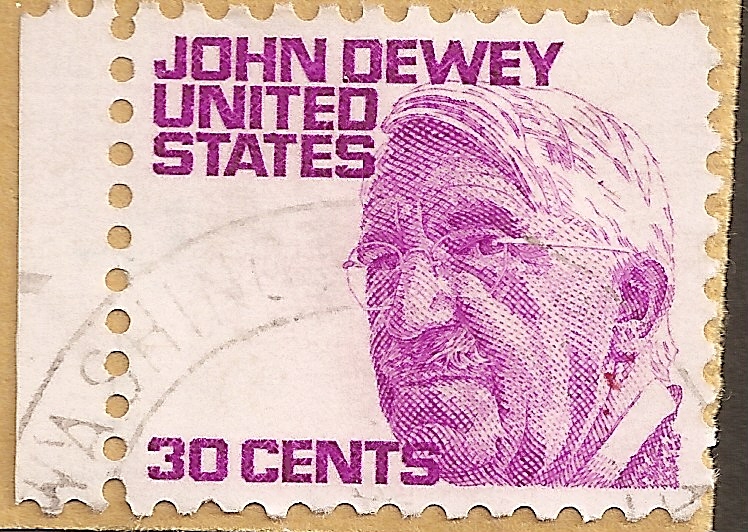 |
  1931 - Colloquy on "The Curriculum for the Liberal Arts College," Rollins College, Winter Park, Florida (USA). "Hamilton Holt organized a national colloquy chaired by John Dewey [1859-1952] and attended by presidents and representatives of many of our nation's leading institutions. "Hamilton Holt's ideas and his invitation of John Dewey to campus in 1931 not only led to curricular reform at Rollins, but also helped to shape national dialogue about the meaning of education... Hamilton Holt believed that education was far more than the compilation and memorization of facts. He stated that educators should put 'less emphasis upon information for its own sake, and more upon linking the subject studied with the life of the individual studying it.' When I think of Hamilton Holt and his legacy as the eighth president of the College, I am most impressed with his innovative departure from the educational practices of his day. ///
At the Hamilton Holt School, named by Rollins' 12th president Thaddeus Seymour, we embody President Holt's spirit of innovation and engagement. Unlike other liberal arts colleges that focus exclusively on students who enter at age 18 and graduate at age 22, Rollins College, through the Hamilton Holt School, provides a high-quality liberal arts degree program to local residents of all ages. This innovative departure from tradition that brings together diverse perspectives in a dynamic learning environment represents the lasting legacy of Hamilton Holt. We, at the Hamilton Holt School, are proud to carry on that legacy." 1931 - Colloquy on "The Curriculum for the Liberal Arts College," Rollins College, Winter Park, Florida (USA). "Hamilton Holt organized a national colloquy chaired by John Dewey [1859-1952] and attended by presidents and representatives of many of our nation's leading institutions. "Hamilton Holt's ideas and his invitation of John Dewey to campus in 1931 not only led to curricular reform at Rollins, but also helped to shape national dialogue about the meaning of education... Hamilton Holt believed that education was far more than the compilation and memorization of facts. He stated that educators should put 'less emphasis upon information for its own sake, and more upon linking the subject studied with the life of the individual studying it.' When I think of Hamilton Holt and his legacy as the eighth president of the College, I am most impressed with his innovative departure from the educational practices of his day. ///
At the Hamilton Holt School, named by Rollins' 12th president Thaddeus Seymour, we embody President Holt's spirit of innovation and engagement. Unlike other liberal arts colleges that focus exclusively on students who enter at age 18 and graduate at age 22, Rollins College, through the Hamilton Holt School, provides a high-quality liberal arts degree program to local residents of all ages. This innovative departure from tradition that brings together diverse perspectives in a dynamic learning environment represents the lasting legacy of Hamilton Holt. We, at the Hamilton Holt School, are proud to carry on that legacy."
|


|   1932 - Trafalgar Square, London (England). Sylvia Pankhurst [1882-1960] protesting against British policy in India, at Trafalgar Square, 1932. 1932 - Trafalgar Square, London (England). Sylvia Pankhurst [1882-1960] protesting against British policy in India, at Trafalgar Square, 1932.
|
 | C
O
L
L
E
G
E |
  1933-1957 - Black Mountain College, Black Mountain, North Carolina (USA). "The story of Black Mountain College begins in 1933 and comprises a fascinating chapter in the history of education and the arts. Conceived by John Andrew Rice, Jr. [1888-1968], a brilliant and mercurial scholar who left Rollins College in a storm of controversy, Black Mountain College was born out of a desire to create a new type of college based on John Dewey’s principles of progressive education. The events that precipitated the College’s founding occurred simultaneously with the rise of Adolf Hitler, the closing of the Bauhaus by the Nazis, and the beginning of the persecution of artists and intellectuals on the European continent. Some of these people found their way to Black Mountain, either as students or faculty. Meanwhile, the United States was mired in the Great Depression, and Franklin Roosevelt, committed to putting people back to work, established the Public Works Arts Project (a precursor of the WPA)." 1933-1957 - Black Mountain College, Black Mountain, North Carolina (USA). "The story of Black Mountain College begins in 1933 and comprises a fascinating chapter in the history of education and the arts. Conceived by John Andrew Rice, Jr. [1888-1968], a brilliant and mercurial scholar who left Rollins College in a storm of controversy, Black Mountain College was born out of a desire to create a new type of college based on John Dewey’s principles of progressive education. The events that precipitated the College’s founding occurred simultaneously with the rise of Adolf Hitler, the closing of the Bauhaus by the Nazis, and the beginning of the persecution of artists and intellectuals on the European continent. Some of these people found their way to Black Mountain, either as students or faculty. Meanwhile, the United States was mired in the Great Depression, and Franklin Roosevelt, committed to putting people back to work, established the Public Works Arts Project (a precursor of the WPA)."
|
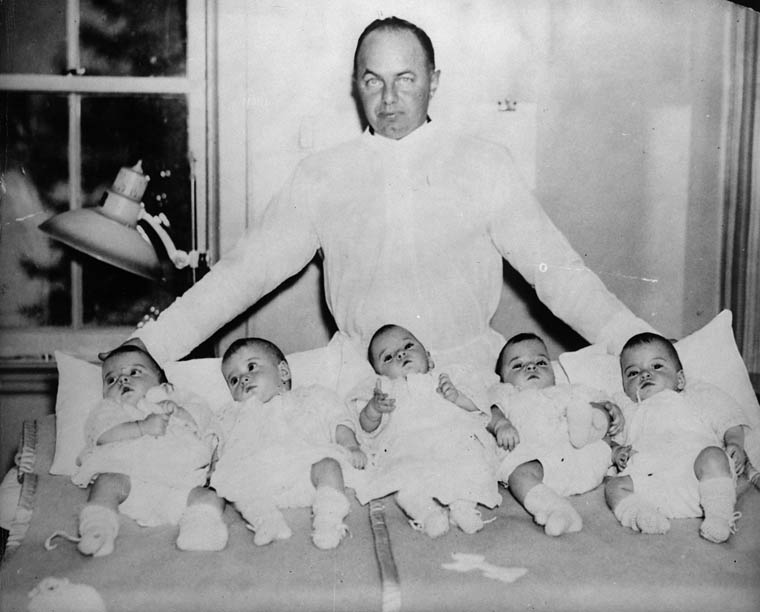 | S
T
O
N
E |
  1934 - Walk of Fame, Rollins College, Winter Park, Florida (USA).
"Probably the most problematic stone Holt ever obtained [for the Walk of Fame] was that of the Dionne Quintuplets [born May 28, 1934]. The President’s initial request for a stone was rejected because the guardians of the quints had been swamped with similar requests from mothers who believed such stones could enhance fertility. Prexy replied that he really didn’t think Rollins fell in the same category as 'superstitious mothers,' and the guardians responded that Rollins was welcome to a stone—anytime someone wanted to come to Canada and get it. Hamilton Holt and Rollins got the stone." 1934 - Walk of Fame, Rollins College, Winter Park, Florida (USA).
"Probably the most problematic stone Holt ever obtained [for the Walk of Fame] was that of the Dionne Quintuplets [born May 28, 1934]. The President’s initial request for a stone was rejected because the guardians of the quints had been swamped with similar requests from mothers who believed such stones could enhance fertility. Prexy replied that he really didn’t think Rollins fell in the same category as 'superstitious mothers,' and the guardians responded that Rollins was welcome to a stone—anytime someone wanted to come to Canada and get it. Hamilton Holt and Rollins got the stone."
|

| M
E
M
O
R
I
A
L |   June 21, 1936 - "Anti-Air War Memorial," NW of Mornington Road & the High Road, Woodford Green, Essex, near London (England). Bottom image. Sculpted by Eric Benfield in the shape of a bomb for suffrigist (and onetime communist) Sylvia Pankhurst [1882-1960]. Rededicated on July 4, 1936, after being vandalized. "In October 1935, Pankhurst was outraged by Mussolini's assault on Ethiopia, the only part of Africa that remained independent and had joined the League of Nations. Unveiled that same month by a group that included Pankhurst and [Tesfaye] Zaphiro, the secretary of the Imperial Ethiopian Legation, the monument stood prominently outside Red Cottage [which Pankhurst shared with Italian anarchist Silvio Corio] along with a plaque dedicating it ironically to politicians who, at the World Disarmament Conference [which] opened in Geneva in February 1932, 'upheld the right to use bombing planes.'" One of 21 peace monuments named by the PPU website. Named in "A Peace Trail Through London" by Valerie Flessati (1998). June 21, 1936 - "Anti-Air War Memorial," NW of Mornington Road & the High Road, Woodford Green, Essex, near London (England). Bottom image. Sculpted by Eric Benfield in the shape of a bomb for suffrigist (and onetime communist) Sylvia Pankhurst [1882-1960]. Rededicated on July 4, 1936, after being vandalized. "In October 1935, Pankhurst was outraged by Mussolini's assault on Ethiopia, the only part of Africa that remained independent and had joined the League of Nations. Unveiled that same month by a group that included Pankhurst and [Tesfaye] Zaphiro, the secretary of the Imperial Ethiopian Legation, the monument stood prominently outside Red Cottage [which Pankhurst shared with Italian anarchist Silvio Corio] along with a plaque dedicating it ironically to politicians who, at the World Disarmament Conference [which] opened in Geneva in February 1932, 'upheld the right to use bombing planes.'" One of 21 peace monuments named by the PPU website. Named in "A Peace Trail Through London" by Valerie Flessati (1998). 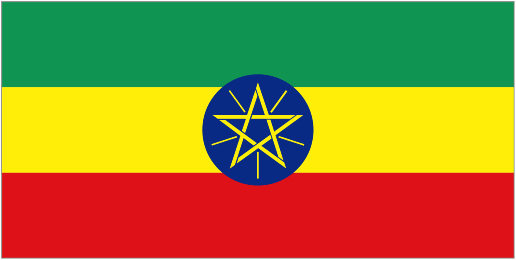
|


 | S
H
E
L
L
|   November 11, 1938 - Peace Monument, in front of Lyman's Hall, Rollins College, Winter Park, Florida (USA). German artillery shell made into a monument by Hamilton Holt [1872-1951], president of Rollins College.
Dedicated on Armistice Day 1938.
"Vandalized on Aug. 23, 1943. It was suspected that servicemen from the US Army STAR (Specialized Training and Reassignment) unit stationed on campus were responsible for the act, but investigation did not support that conclusion. The German shell on the stone pedestal was destroyed, but the plaque survived, was put in storage, and was rediscovered in the 1980's under President Thaddeus Seymour, who rededicated it in 1988 by the stairway of the Mills Memorial Building next to Holt’s statue. [Information courtesy of college archivist Wenxian Zhang 10Jan11]" The Plaque bears this inscription:
Pause, passerby and hang your head in shame.
This Engine of Destruction, Torture and Death Symbolizes:
The Prostitution of the Inventor,
The Avarice of the Manufacturer,
The Blood-guilt of the statesman,
The Savagery of the Soldier,
The Perverted Patriotism of the Citizen,
The Debasement of the Human Race.
That it can be Employed as an Instrument of Defense of Liberty, Justice and Right in Nowise Invalidates the Truth of the Words Here Graven.
—Hamilton Holt.
Compare 1936 monument of Sylvaia Pankhurst in London, England (UK). Did Holt know about Pankhurst's monument? November 11, 1938 - Peace Monument, in front of Lyman's Hall, Rollins College, Winter Park, Florida (USA). German artillery shell made into a monument by Hamilton Holt [1872-1951], president of Rollins College.
Dedicated on Armistice Day 1938.
"Vandalized on Aug. 23, 1943. It was suspected that servicemen from the US Army STAR (Specialized Training and Reassignment) unit stationed on campus were responsible for the act, but investigation did not support that conclusion. The German shell on the stone pedestal was destroyed, but the plaque survived, was put in storage, and was rediscovered in the 1980's under President Thaddeus Seymour, who rededicated it in 1988 by the stairway of the Mills Memorial Building next to Holt’s statue. [Information courtesy of college archivist Wenxian Zhang 10Jan11]" The Plaque bears this inscription:
Pause, passerby and hang your head in shame.
This Engine of Destruction, Torture and Death Symbolizes:
The Prostitution of the Inventor,
The Avarice of the Manufacturer,
The Blood-guilt of the statesman,
The Savagery of the Soldier,
The Perverted Patriotism of the Citizen,
The Debasement of the Human Race.
That it can be Employed as an Instrument of Defense of Liberty, Justice and Right in Nowise Invalidates the Truth of the Words Here Graven.
—Hamilton Holt.
Compare 1936 monument of Sylvaia Pankhurst in London, England (UK). Did Holt know about Pankhurst's monument?
|

| S
P
H
E
R
E |  August 1939 - "Armillary Sphere," Ariana Park, Palais des Nations / Palace of Nations, Geneva (Switzerland). 410 cm in diameter. Weighs some 5,800 kg. Also called Celestial Sphere. By Paul Manship [1885-1966]. Presented by the Woodrow Wilson Foundation [of which Hamilton Holt was a director] in memory of the founder of the League of Nations. August 1939 - "Armillary Sphere," Ariana Park, Palais des Nations / Palace of Nations, Geneva (Switzerland). 410 cm in diameter. Weighs some 5,800 kg. Also called Celestial Sphere. By Paul Manship [1885-1966]. Presented by the Woodrow Wilson Foundation [of which Hamilton Holt was a director] in memory of the founder of the League of Nations.
  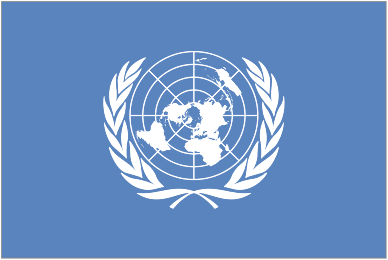
|
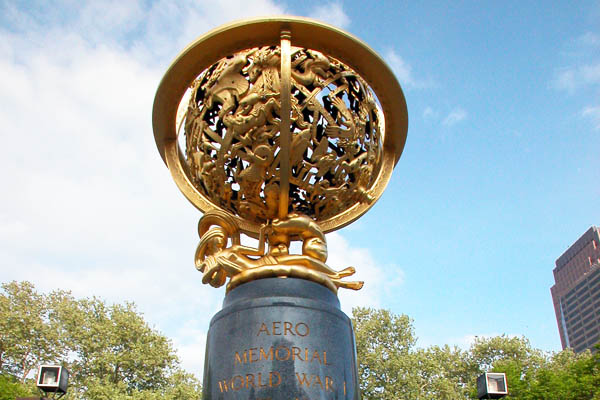
| S
P
H
E
R
E |

 June 1, 1950 - "Aero Memorial World War I 1917-18," Philadelphia, Pennsylvania (USA). By Paul Manship [1885-1966]. "Proposed during WW-I by the Aero Club of Pennsylvania. Commissioned by Fairmount Park Art Association."
June 1, 1950 - "Aero Memorial World War I 1917-18," Philadelphia, Pennsylvania (USA). By Paul Manship [1885-1966]. "Proposed during WW-I by the Aero Club of Pennsylvania. Commissioned by Fairmount Park Art Association."
|

  March 1940 - Rollins Institute on International Relations, Rollins College, Winter Park, Florida (USA). "In March 1940, Rollins College and then-President Hamilton Holt, welcomed a roster of notable speakers to the campus to discuss the problem of 'what America should do at [that] time to contribute to an ultimate world peace.' World War II had only just begun and America had not yet entered the conflict, but the discussion of the nation’s role in the international arena was a hot topic. The Institute was organized by Dr. Henry A. Atkinson, General Secretary of the Church Peace Union and the World Alliance for International Friendship Through the Churches, and President Holt. The three-day event drew more than 900 attendees, including 400 delegates from 150 different churches. Addresses were given by prominent authorities of the time including:
• The Honorable Dr. Hu Shih, Ambassador from China to the U.S.,
• Professor James T. Shotwell of Columbia University and Chairman of the Commission to Student the Organization of Peace [sic],
• The Honorable William S. Culbertson, former Ambassador to Chile and Minister to Romania,
and
• Dr. Hans Simons, a high-ranking District Governor in Germany before the Hitler regime. ///
Topics included 'The Unseen but Essential Factors Working for Peace,' 'What Kind of World do we Want After the War?,' 'The Far East and the Future Peace of the World,' and 'The World in Which we Live – Guarantees of Liberty and Security.' While each of the speakers had his own views on the subject of mechanisms for achieving peace, there was unanimous approval of three resolutions:
• 'We endorse the policy of the United States Government in negotiating reciprocal trade agreements and we urge the Senate to concur in extending the act making possible this policy.'
• 'We urge that the United States quit the business of supplying munitions and war materials to Japan while that country continues to engage in aggression.'
• 'We urge upon ourselves and all American citizens study of and cooperation in the projects of the Commission to study the Organization of Peace.'" March 1940 - Rollins Institute on International Relations, Rollins College, Winter Park, Florida (USA). "In March 1940, Rollins College and then-President Hamilton Holt, welcomed a roster of notable speakers to the campus to discuss the problem of 'what America should do at [that] time to contribute to an ultimate world peace.' World War II had only just begun and America had not yet entered the conflict, but the discussion of the nation’s role in the international arena was a hot topic. The Institute was organized by Dr. Henry A. Atkinson, General Secretary of the Church Peace Union and the World Alliance for International Friendship Through the Churches, and President Holt. The three-day event drew more than 900 attendees, including 400 delegates from 150 different churches. Addresses were given by prominent authorities of the time including:
• The Honorable Dr. Hu Shih, Ambassador from China to the U.S.,
• Professor James T. Shotwell of Columbia University and Chairman of the Commission to Student the Organization of Peace [sic],
• The Honorable William S. Culbertson, former Ambassador to Chile and Minister to Romania,
and
• Dr. Hans Simons, a high-ranking District Governor in Germany before the Hitler regime. ///
Topics included 'The Unseen but Essential Factors Working for Peace,' 'What Kind of World do we Want After the War?,' 'The Far East and the Future Peace of the World,' and 'The World in Which we Live – Guarantees of Liberty and Security.' While each of the speakers had his own views on the subject of mechanisms for achieving peace, there was unanimous approval of three resolutions:
• 'We endorse the policy of the United States Government in negotiating reciprocal trade agreements and we urge the Senate to concur in extending the act making possible this policy.'
• 'We urge that the United States quit the business of supplying munitions and war materials to Japan while that country continues to engage in aggression.'
• 'We urge upon ourselves and all American citizens study of and cooperation in the projects of the Commission to study the Organization of Peace.'" |

 |
  1946 - Statue of Ninomiya Sontoku, Rollins College, Winter Park, Florida (USA).
"In February 1946, Rollins graduate & World War II veteran Clinton Nichols ’34 wrote to President Holt, telling him about an artifact found by U.S. Marines when they were cleaning out a well in Okinawa, looking for drinking water. Hidden in the well was a bronze statue of Ninomiya Kinjiro [1787-1856] as a boy, reading the sayings of Confucius while carrying a bundle of twigs. Though born to a peasant family, he became a wealthy agricultural leader, economist, and philosopher, and his statue was often placed in schools to encourage others to follow his example of constant study.
The U.S. Navy had given Mr. Nichols permission to take the statue back to the States, and he wrote Pres. Holt, 'I am so thrilled with it.' Then he asked, 'WOULD YOU LIKE IT AS A GIFT FOR ROLLINS?' After the statue arrived, Pres. Holt wrote in his thank-you letter, 'to say we are delighted with it is putting it mildly. . . That was a fine present to your Alma Mater.'
The statue was placed in a niche in the College’s new Administration Building. Years went by with no questions asked, until 1983 when a student approached Pres. Thaddeus Seymour to ask why Rollins was exhibiting war booty..." /// Image shows Hamilton Holt with the statue in 1946. See 1995 below.
1946 - Statue of Ninomiya Sontoku, Rollins College, Winter Park, Florida (USA).
"In February 1946, Rollins graduate & World War II veteran Clinton Nichols ’34 wrote to President Holt, telling him about an artifact found by U.S. Marines when they were cleaning out a well in Okinawa, looking for drinking water. Hidden in the well was a bronze statue of Ninomiya Kinjiro [1787-1856] as a boy, reading the sayings of Confucius while carrying a bundle of twigs. Though born to a peasant family, he became a wealthy agricultural leader, economist, and philosopher, and his statue was often placed in schools to encourage others to follow his example of constant study.
The U.S. Navy had given Mr. Nichols permission to take the statue back to the States, and he wrote Pres. Holt, 'I am so thrilled with it.' Then he asked, 'WOULD YOU LIKE IT AS A GIFT FOR ROLLINS?' After the statue arrived, Pres. Holt wrote in his thank-you letter, 'to say we are delighted with it is putting it mildly. . . That was a fine present to your Alma Mater.'
The statue was placed in a niche in the College’s new Administration Building. Years went by with no questions asked, until 1983 when a student approached Pres. Thaddeus Seymour to ask why Rollins was exhibiting war booty..." /// Image shows Hamilton Holt with the statue in 1946. See 1995 below. 
|

 1947 - "Holt’s longstanding support for diversity was challenged at Rollins as he was forced to suspend the 1947 homecoming football game with Ohio Wesleyan over the participation of African-American player and was initially blocked from awarding Mary McLeod Bethune an honorary degree."
1947 - "Holt’s longstanding support for diversity was challenged at Rollins as he was forced to suspend the 1947 homecoming football game with Ohio Wesleyan over the participation of African-American player and was initially blocked from awarding Mary McLeod Bethune an honorary degree."

 1949 - Hamilton Holt ceases to be president of Rollins College. Succeeded by Paul Wagner whose "presidency started off on a high note with the faculty, students, and staff all approving of him and the energy he brought to the presidency. As the youngest college president in the country at the time, national news media embraced his charisma. Following some difficult administrative decisions and a controversial time in Rollins’ history, Wagner left the presidency [in 1951]."
1949 - Hamilton Holt ceases to be president of Rollins College. Succeeded by Paul Wagner whose "presidency started off on a high note with the faculty, students, and staff all approving of him and the energy he brought to the presidency. As the youngest college president in the country at the time, national news media embraced his charisma. Following some difficult administrative decisions and a controversial time in Rollins’ history, Wagner left the presidency [in 1951]."

 April 26, 1951 - Death of Hamilton Holt in Woodstock, Connecticut (USA). Buried in Connecticut?
April 26, 1951 - Death of Hamilton Holt in Woodstock, Connecticut (USA). Buried in Connecticut?
 | G
R
A
V
E |  After September 27, 1960 - Grave of Sylvia Pankhurst, Holy Trinity Cathedral, Addis Ababa (Ethiopia). "After the liberation of Ethiopia, Sylvia Pankhurst [1882-1960] became a strong supporter of union between Ethiopia & the former Italian Somaliland...In 1948, MI5 considered strategies for 'muzzling the tiresome Miss Sylvia Pankhurst.' She became a friend & adviser to Emperor Haile Selassie [1892-1975] and followed a consistently anti-British stance. She moved to Addis Ababa at Selassie's invitation in 1956, with her son Richard (who continues to live there) and founded a monthly journal, Ethiopia Observer, which reported on many aspects of Ethiopian life and development.
She died on September 27, 1960, and was given a full state funeral at which Selassie named her 'an honorary Ethiopian.' She is the only foreigner buried in front of Holy Trinity Cathedral, in the area reserved for patriots of the Italian war." After September 27, 1960 - Grave of Sylvia Pankhurst, Holy Trinity Cathedral, Addis Ababa (Ethiopia). "After the liberation of Ethiopia, Sylvia Pankhurst [1882-1960] became a strong supporter of union between Ethiopia & the former Italian Somaliland...In 1948, MI5 considered strategies for 'muzzling the tiresome Miss Sylvia Pankhurst.' She became a friend & adviser to Emperor Haile Selassie [1892-1975] and followed a consistently anti-British stance. She moved to Addis Ababa at Selassie's invitation in 1956, with her son Richard (who continues to live there) and founded a monthly journal, Ethiopia Observer, which reported on many aspects of Ethiopian life and development.
She died on September 27, 1960, and was given a full state funeral at which Selassie named her 'an honorary Ethiopian.' She is the only foreigner buried in front of Holy Trinity Cathedral, in the area reserved for patriots of the Italian war." 
|
  1960 - Definitive biography by Warren F. Kuehl entitled "Hamilton Holt: Journalist, internationalist, educator," University of Florida Press, Gainesville, LD4721.R717 1925B, pp. 303. Kuehl is co-author with Lynne K. Dunn of "Keeping the Covenant: American Internationalists & the League of Nations, 1920-1939," Kent State University Press, Kent, Ohio, 1997. patriots of the Italian war." 1960 - Definitive biography by Warren F. Kuehl entitled "Hamilton Holt: Journalist, internationalist, educator," University of Florida Press, Gainesville, LD4721.R717 1925B, pp. 303. Kuehl is co-author with Lynne K. Dunn of "Keeping the Covenant: American Internationalists & the League of Nations, 1920-1939," Kent State University Press, Kent, Ohio, 1997. patriots of the Italian war." 
|   1964 - Register [of] Hamilton Holt Papers", Mills Memorial Library, Rollins College, Winter Park, Florida. 1964 - Register [of] Hamilton Holt Papers", Mills Memorial Library, Rollins College, Winter Park, Florida.
|
![]() 
|
  May 1995 - Replica Statue of Ninomiya Sontoku, Rollins College, Winter Park, Florida (USA). From Wikipedia: "In October 1984, Rollins College made international headlines when the government of Japan, per the request of its Okinawa Prefecture, asked for the return of a statue that was taken as war loot after the Battle of Okinawa in 1945 by Clinton C. Nichols, a then-lieutenant commander in the United States Navy and a Rollins graduate. Nichols had presented the statue of Ninomiya Sontoku [1787-1856], a prominent 19th-century Japanese agricultural leader, philosopher, moralist, and economist, to then-President Hamilton Holt, who promised to keep the statue permanently in the main lobby of the Warren Administration Building. At first, the school rejected the offer made by Okinawan officials, who suggested that a replica of the statue will be presented to the school if the original was returned to the island; however, after consulting both with the U.S. State Department and the school's board of trustees, then-President Rita Bornstein accepted the offer and the statue was returned to Okinawa in 1995 in commemoration of the 50th anniversary of the end of World War II. In addition to providing the school with a replica of the original statue, the government of Okinawa & Rollins signed an 'an agreement of cooperation' that pledges to develop additional cooperative projects between the College & Shogaku Junior & Senior High School, the Okinawan school where the original statue has been placed."
May 1995 - Replica Statue of Ninomiya Sontoku, Rollins College, Winter Park, Florida (USA). From Wikipedia: "In October 1984, Rollins College made international headlines when the government of Japan, per the request of its Okinawa Prefecture, asked for the return of a statue that was taken as war loot after the Battle of Okinawa in 1945 by Clinton C. Nichols, a then-lieutenant commander in the United States Navy and a Rollins graduate. Nichols had presented the statue of Ninomiya Sontoku [1787-1856], a prominent 19th-century Japanese agricultural leader, philosopher, moralist, and economist, to then-President Hamilton Holt, who promised to keep the statue permanently in the main lobby of the Warren Administration Building. At first, the school rejected the offer made by Okinawan officials, who suggested that a replica of the statue will be presented to the school if the original was returned to the island; however, after consulting both with the U.S. State Department and the school's board of trustees, then-President Rita Bornstein accepted the offer and the statue was returned to Okinawa in 1995 in commemoration of the 50th anniversary of the end of World War II. In addition to providing the school with a replica of the original statue, the government of Okinawa & Rollins signed an 'an agreement of cooperation' that pledges to develop additional cooperative projects between the College & Shogaku Junior & Senior High School, the Okinawan school where the original statue has been placed." 
|





![]() August 18, 1872 - Birth of Hamilton Holt, Brooklyn, New York (USA). Son of George Chandler Holt [1843-1931] and Mary Louisa Bowen. "Mary Louisa Bowen, born two years after Gothic Revival-style Roseland Cottage was completed in 1846, was the eldest daughter of Henry Chandler Bowen [1813–1896] and Lucy Maria Tappan [1825–1863]. She married George Holt in Woodstock, in 1871. Even as an adult she summered at Roseland Cottage with her family. Her daughter, Constance, was the last Bowen to live at Roseland Cottage, and did so until her death in 1968." Hamilton Holt grew up in Spuyten Duyvil section of Manhattan [sic].
August 18, 1872 - Birth of Hamilton Holt, Brooklyn, New York (USA). Son of George Chandler Holt [1843-1931] and Mary Louisa Bowen. "Mary Louisa Bowen, born two years after Gothic Revival-style Roseland Cottage was completed in 1846, was the eldest daughter of Henry Chandler Bowen [1813–1896] and Lucy Maria Tappan [1825–1863]. She married George Holt in Woodstock, in 1871. Even as an adult she summered at Roseland Cottage with her family. Her daughter, Constance, was the last Bowen to live at Roseland Cottage, and did so until her death in 1968." Hamilton Holt grew up in Spuyten Duyvil section of Manhattan [sic].

May 5, 1882 - Birth of Sylvia Pankhurst [1882-1960] in Manchester (England), a daughter of Dr. Richard Pankhurst [1834-1898] & Emmeline Pankhurst [1858-1928], members of the Independent Labour Party & (especially Emmeline) much concerned with women's rights. Sylvia & her sisters attend the Manchester High School for Girls. Her sister Christabel Pankhurst [1880-1958] will also become an activist.
Sylvia trained as an artist at the Manchester School of Art, and in 1900 won a scholarship to the Royal College of Art in South Kensington.

![]() 1894 - Hamilton Holt was graduated from Yale University, New Haven, Connecticut (USA).
1894 - Hamilton Holt was graduated from Yale University, New Haven, Connecticut (USA).
![]() 1897 - Hamilton Holt completed graduate work in economics & sociology at Columbia University, New York City, New York (USA).
1897 - Hamilton Holt completed graduate work in economics & sociology at Columbia University, New York City, New York (USA).

1899 - Hamilton Holt married Alexandria Crawford Smith. Their family grew to include four children: Beatrice (later, Beatrice Chadbourne), Leila (later Leila Rosenthal), John Eliot and George Chandler. "Not much is written about Holt’s family life. It is clear he was able to balance domestic and career responsibilities as he made rapid strides at the Independent."

1907 - "In 1907 Hamilton Holt attended the [Second] Hague Peace Conference. Holt’s perspective on peace stressed engagement and dialogue. In 1907 he stated, 'Disarmament cannot logically precede political organization, for until the world is politically organized there is no way, except by force of arms, by which a nation can assure its rights."


1909 - Continuing his advocacy for diversity and acceptance, Hamilton Holt along with other notable progressives such as W.E.B. Dubois, Ida B. Wells-Barnett, Jane Addams, Florence Kelley, John Dewey, Charles Darrow, and Mary McLeod Bethune founded the National Association for the Advancement of Colored People (NAACP) in 1909." "On May 30, 1909, the Niagara Movement conference took place at New York City's Henry Street Settlement House, from which an organization of more than 40 individuals emerged, calling itself the National Negro Committee. W.E.B. Du Bois played a key role in organizing the event and presided over the proceedings. Also in attendance was African-American journalist and anti-lynching crusader Ida B. Wells-Barnett. At its second conference on May 30, 1910, members chose as the organization's name the National Association for the Advancement of Colored People and elected its first officers... The conference resulted in a more influential and diverse organization, where the leadership was predominantly white and heavily Jewish American. In fact, at its founding, the NAACP had only one African American on its executive board, Du Bois himself. It did not elect a black president until 1975, although executive directors had been African American."
1909 - Hamilton Holt wrote "Commercialism and Journalism."
1911 - "Hamilton Holt further clarified the need for a centralized body to promote peace in 1911, when he wrote in an issue of World’s Work, 'Let us add to the Declaration of Independence, a Declaration of Interdependence…Let the United Nation succeed the United States.'"


1919 - "Holt's engagement on the international stage was varied, he was founding member of the Italy-America Society, the Netherlands American Foundation, American-Scandinavian Foundation, the Greek-American Club and the Friends of Poland. In the aftermath of the First World War, he became a strong supporter of Woodrow Wilson’s League of Nation proposal. He attended the 1919 Paris Peace Conference..."


After 1919 - Holt toured the United States promoting US participation in the League of Nations. One article in the Independent warned, 'If the covenant…is defeated, the nations cannot go forward on an orderly basis of international cooperation, but must sink back to the old era of nationalistic competition, with its mutual hates, suspicions, and intrigues, its colossal armaments and inevitable wars.' Holt helped found the League of Nations Non-Partisan Association and would later serve as director of the Woodrow Wilson Foundation."
![]()
1921 - "In 1921, Holt stepped down as editor of the Independent, becoming a consultant. He maintained his peace activism as he lectured for the American branch of the International Conciliation & World Peace Foundation and was one of the honorary directors of World Federalist[s] USA. Holt’s efforts to promote peace garnered accolades and commendations from governments around the world. He was member of the Japanese Order of the Sacred Treasure, an officer of the Greek Order of George I, a member of the French Order of Public Instruction, a knight in the French Legion of Honor, a member of the Order of the Crown of Italy, a knight in Polonia Restituta, and a knight of the Swedish North Star."
![]() May 10, 1924 - Birth of Mary Bowen Holt [1924-2010], New York City, New York (USA). Daughter of Henry and Margaret Holt. How do these family members relate to Hamilton Holt.
May 10, 1924 - Birth of Mary Bowen Holt [1924-2010], New York City, New York (USA). Daughter of Henry and Margaret Holt. How do these family members relate to Hamilton Holt.
![]() 1924 - Hamilton Holt unsuccessfully ran for the US Senate from Connecticut as a Democrat. Soundly defeated 60.4% to 38.6% by Hiram Bingham III (who discovered Machu Picchu). "After this defeat, Holt was approached to become president of Rollins College by Irving Bacheller [1859-1950]. A frequent contributor to the Independent and noted author, Bacheller served as a college trustee and offered Holt the position. Holt accepted the challenge later recalling, "I had no special qualification for the position. But from observation in many colleges and from my own experiences I had acquired definite idea about teaching which I longed to put into practice.'"
1924 - Hamilton Holt unsuccessfully ran for the US Senate from Connecticut as a Democrat. Soundly defeated 60.4% to 38.6% by Hiram Bingham III (who discovered Machu Picchu). "After this defeat, Holt was approached to become president of Rollins College by Irving Bacheller [1859-1950]. A frequent contributor to the Independent and noted author, Bacheller served as a college trustee and offered Holt the position. Holt accepted the challenge later recalling, "I had no special qualification for the position. But from observation in many colleges and from my own experiences I had acquired definite idea about teaching which I longed to put into practice.'"















![]() 1947 - "Holt’s longstanding support for diversity was challenged at Rollins as he was forced to suspend the 1947 homecoming football game with Ohio Wesleyan over the participation of African-American player and was initially blocked from awarding Mary McLeod Bethune an honorary degree."
1947 - "Holt’s longstanding support for diversity was challenged at Rollins as he was forced to suspend the 1947 homecoming football game with Ohio Wesleyan over the participation of African-American player and was initially blocked from awarding Mary McLeod Bethune an honorary degree."
![]() 1949 - Hamilton Holt ceases to be president of Rollins College. Succeeded by Paul Wagner whose "presidency started off on a high note with the faculty, students, and staff all approving of him and the energy he brought to the presidency. As the youngest college president in the country at the time, national news media embraced his charisma. Following some difficult administrative decisions and a controversial time in Rollins’ history, Wagner left the presidency [in 1951]."
1949 - Hamilton Holt ceases to be president of Rollins College. Succeeded by Paul Wagner whose "presidency started off on a high note with the faculty, students, and staff all approving of him and the energy he brought to the presidency. As the youngest college president in the country at the time, national news media embraced his charisma. Following some difficult administrative decisions and a controversial time in Rollins’ history, Wagner left the presidency [in 1951]."
![]() April 26, 1951 - Death of Hamilton Holt in Woodstock, Connecticut (USA). Buried in Connecticut?
April 26, 1951 - Death of Hamilton Holt in Woodstock, Connecticut (USA). Buried in Connecticut?



